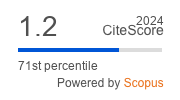Linguistic Manipulative Techniques in Advertising Slogans of Fast Food Restaurants
DOI:
https://doi.org/10.29038/eejpl.2017.4.2.dobKeywords:
manipulation, advertisement, distortion, deletion, generalization, presupposition, metaphor, tag questions, embedded commands, double binds, antithesis, life values, unique selling proposition, truism.Abstract
The article deals with the notion of manipulation in advertising slogans of fast food restaurants. It focuses on techniques and means of language influence on the recipient. The article shows results of the study of 239 advertising slogans of fast food restaurants in English-speaking countries (a total number of 104 companies). Different language patterns which are used in advertising slogans and aimed at persuasion of customers on the subconscious level, are defined and analyzed; among them the most numerous are language patterns which create statements with distortions, deletions, and generalizations manifesting themselves in a variety of forms. The research also describes manipulative language patterns specifically related to advertising, such as unique selling proposition or life values. The article also shows quantitative proportions of the use of each pattern, as well as patterns used by the most successful and less successful restaurants. The most frequent of the manipulative language patterns are lost performatives, mind reading, and comparisons. The techniques of life values, mind reading, and antithesis are more common in advertising slogans of top restaurants compared to less popular ones. Individual slogans frequently manifest the use of more than one linguistic pattern of manipulation.
References
- Alder, H. (2002). Handbook of NLP: A Manual for Professional Communicators. New York: Routledge
- Bandler, R, Grinder, J. (1975). The Structure of Magic (1st edition). USA: Science & Behavior Books.
- Burton, K., Ready, R. (2010). Neuro-linguistic Programming for Dummies. West Sussex: Wiley
- Ciotti, G. 5 Ways to Develop a Unique Selling Proposition Convince&Convert. Dec. 2013. Retrieved from http://www.convinceandconvert.com/digital-marketing/5-ways-to-develop-a-unique-selling-proposition/
- Colbert, B. (2012). From Ordinary to Extraordinary – How to Live An Exceptional Life. Ireland: Gill
- Danciu, V. (2014). Manipulative marketing: persuasion and manipulation of the consumer through advertising. Theoretical and Applied Economics, 9(2), 19-34.
- Гесюк Ю. Застосування нейролінгвістичного програмування в рекламі. Медіапростір. 2014, № 5. С. 122-126.
- Горин С. НЛП: Техники россыпью. //Метафора экспромтом. Под ред. Н. Либман. М.: КСП+, 2004. С. 269-268.
- Каліщук Д. Психолінгвістичні прийоми мовленнєвого маніпулювання у політичному дискурсі «Гра у простонародність» // Вісник Харківського національного університету імені В.Н. Каразіна. 2012. Вып. 1022, № 71. С. 59-63.
- Кутуза Н. Маніпулятивні прийоми в рекламному та політичному дискурсах: лінгвістичні аспекти // Науковий вісник Херсонського державного університету. 2006. № 3. С. 285-288.
- Lapšanská, J. (2006). The language of advertising with the concentration on the linguistic means and the analysis of advertising slogans. Diploma thesis, Bratislava: Comenius University in Bratislava, Faculty of Education.
- Romanenko, E. (2014). Linguistic analysis of on-line advertising in English. Bachelor thesis, Prague: Charles University in Prague, Faculty of education.
- Vaknin, S. (2008). The Big Book of NLP Techniques. Charleston: BookSurge.
References (translated and transliterated)
- Hesiuk, Y. (2014). Zastosuvannia neirolinhvistychnoho prohramuvannia v reklami [The usage of neurolinguistic programming in advertising]. Mediaprostir, 5, 122-126.
- Horyn, S. (2004). NLP: Tehnyky rossypiu. [Writing techniques]. In: Metafora Expromtom, (pp. 269-268). N. Libman (ed). Moscow: KSP+.
- Kalischuk, D. (2012). Psykholinhvistychni pryiomy movlennievoho manipuliuvannia u politychnomu dyskursi. “Hra u prostonarodnist” [Psycholinguistic Techniques of Speech Manipulation in Political Discourse. “Plain Folks”]. Journal of V.N.Karazin National University of Kharkiv, 1022(71), 59-63.
- Kutuza, N. (2006). Manipuliatyvni pryiomy v reklamnomu ta politychnomu dyskursakh: linhvistychni aspekty [Manipulative techniques in advertisement and political discourse]. Informational-Methodical Journal of Kherson State University, 3, 285-288.
Sources
- Advertising. 2017. In Business dictionary.com. Retrieved November 9, 2017, from http://www.businessdictionary.com/definition/advertising.html
- Advertising. 2017. In Cambridge dictionary. com. Retrieved November 9, 2017, from https://dictionary.cambridge.org/dictionary/english/advertising
- Advertising. 2017. In Longman Dictionary of Contemporary English. Retrieved November 9, 2017, from https://www.ldoceonline.com/dictionary/advertising
- Burger King Slogans. (2017). Retrieved September 09, 2017, from http://www.thinkslogans.com/ company/burger-king/
- Eagle Boys Pizza Seeks Expansion In India. (2013, August 26). Retrieved September 10, 2017, from https://news.franchiseindia.com/Eagle-Boys-Pizza-seeks-expansion-in-India-2017
- Eat Good And Feel Good. (2016, June 21). Retrieved September 09, 2017, from http://www.eatwithhop. com/2016/06/eat-good-and-feel-good-extreme-pita.html
- Famous restaurant slogans and taglines. (2017). Retrieved August 09, 2017, from http://sloganshub.org/restaurants-slogans/
- Fast Food Slogans List A – F. (2017). Retrieved July 23, 2017, from http://www.ffood. net/fast_food_slogans.htm
- Fast food slogans. (2017). Retrieved September 01, 2017, from http://www.textart.ru/advertising/ slogans/fast-food.html
- Fish and chips slogans. (2017). Retrieved June 12, 2017, from http://www.textart.ru/advertising/ slogans/fish-and-chips.html
- Five Guys Prices. (2017, May 20). Retreived June 20, 2017, from https://fastfoodinusa.com/five-guys-prices/
- Hunt, Kristin. “10 things you didn't know about steak 'n shake” Thrillist. May, 2014. Retrieved July 10, 2017 from https://www.thrillist.com/eat/nation/a-brief-history-of-steak-n-shake
- Manipulation. 2017. In Dictionary.com. Retrieved November 9, 2017, from http://www.dictionary. com/browse/manipulation?s=t
- Manipulation. 2017. In Oxford Learner’s Dictionary. Retrieved November 9, 2017, from https://www.oxfordlearnersdictionaries.com/definition/english/manipulation?q=manipulation
- Papa Murphy's Cowboy Pizza TV Commercial, 'Love at 425 Degrees. (2013). Retrieved August 09, 2017, from https://www.ispot.tv/ad/7d6y/papa-murphys-cowboy-pizza-love-at-425-degrees
- Perrotte, Ashley. “America’ dinner is always open”. Prezi. Oct, 2015. Retrieved July 20, 2017, from https://prezi.com/vn99xnq6may_/americas-diner-is-always-open/
- Pizza Hut. (2017). Retrieved August 11, 2017, from http://www.bestslogans.com/v/237117/makin-it-great-again-and-again-pizza-hut/
- Pret a manager. (2017). Retrieved June 09, 2017, from https://www.pinterest.com/pin/ 535013630709601320/
- Rella, E. “We're lovin' it: McDonald's slogans over the last five decades” Finance. Mar. 2016. Retrieved June 09, 2017, from https://www.aol.com/article/2016/03/01/were-lovin-it-mcdonalds-slogans-over-the-last-five-decades/21320937/ https://genius.com/Fast-food-slogans-annotated
- Restaurant Slogans. (2017). Retrieved August 09, 2017, from http://www.advergize.com/slogans-list/restaurant-slogans/
- Restaurants. (2013, March 03). Retrieved June 03, 2017, from . http://www.morrisanderson.com/ resource-center/entry/Chains-last-links-Nostalgia-helps-keep-once-thriving-restaurant-franchises-/
- Sarodh, Waiz. “Krispy Kreme: Slogans & Humble Beginnings” Advergize Empowering Marketing, Mar. 2017. Retrieved August 09, 2017, from http://www.advergize.com/ advertising/krispy-kreme-slogans-and-humble-beginnings/
- Smaktakula. “Commercials We Do Not Like: Bad Andy” Promethean Times. Feb. 2011. Retrieved September 22, 2017, from https://prometheantimes.com/2011/02/22/commercials-we-do-not-like-badandy/
- Smith, Nelson. “Boston Pizza: Sink Your Teeth into This Delicious 6% Yield” Baystreet, May. 2017. Retrieved October 10, 2017, from http://www.baystreet.ca/dividends/159/Boston-Pizza-Sink-Your-Teeth-into-This-Delicious-6-Yield
- Subway. (2017). Retrieved June 10, 2017, from http://slogans.wikia.com/wiki/Subway
- 10+ Wendy’s Slogans Today, and Over the Years. (2017, June 8). Retrieved August 21, 2017, from http://www.advergize.com/advertising/10-wendys-slogans-today-years/
- Wang, Eric. “McDonald's Slogans”. Flickr. Nov. 2006. Retrieved November 01, 2017, from https://www.flickr.com/photos/99353402@N00/300852871/











 Creative Commons «Attribution» 4.0
Creative Commons «Attribution» 4.0